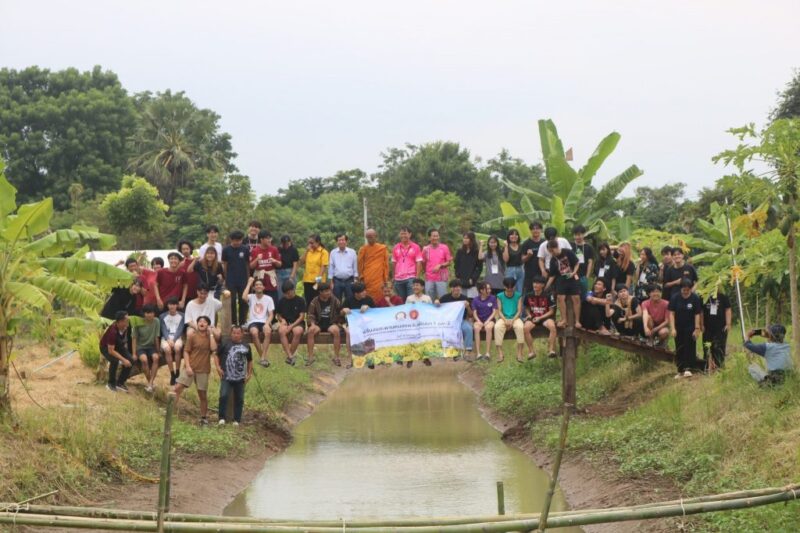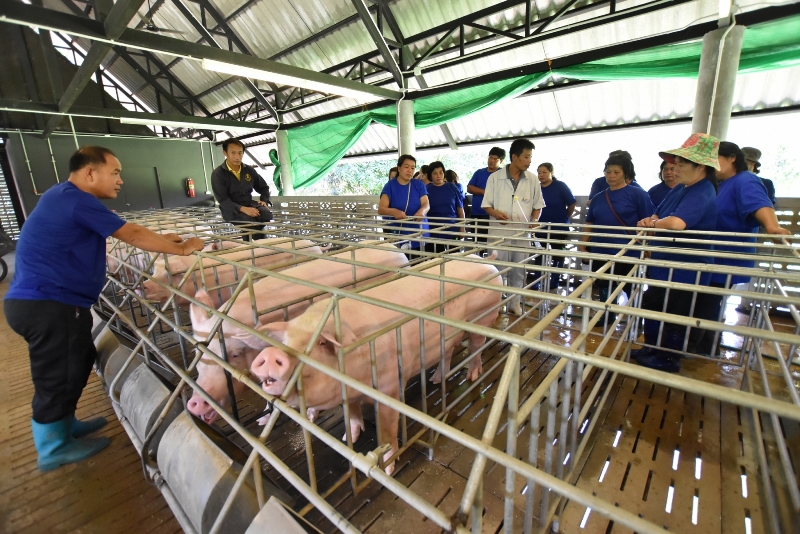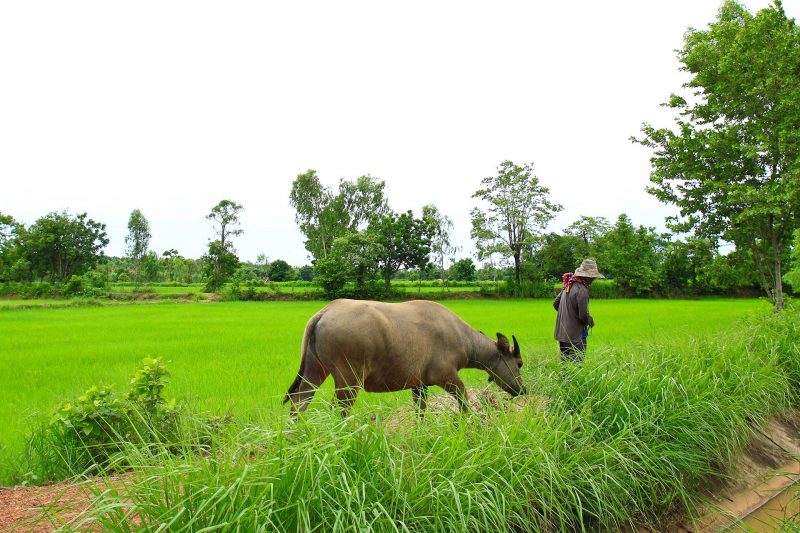Witsawapat Engineering Camp: The irrigation knowledge transfer for sustainability
“The Witsawapat Engineering Camp, led by the Faculty of Engineering at Chulalongkorn University, plays a leading role in transferring knowledge and expertise in water management to address water scarcity issues for the Chetawan Village community in Nan Province. This initiative has been ongoing since 2018 and involves collaborative efforts between the camp, the local community, and government agencies. As a result, 43 households of farmers have been able to utilize water resources on over 400 rai of land throughout the year. They have shifted to cultivating high-value fruit trees as an alternative to low-priced maize, resulting in annual savings of 35,813 baht per rai per household. This has significantly improved the quality of life for farmers and fostered trust and cooperation within the community. In 2023, the community allocated land to establish the ‘Dintania Pracha Ruam Jai’ center, expanding the sharing of knowledge in water system management for other communities.”
The Faculty of Engineering at Chulalongkorn University comprises 12 departments, including the Department of Environmental Engineering, Civil Engineering, Survey Engineering, and Water Resources Engineering. With expert faculty members, this academic incubator serves as a crucial source for nurturing expertise in irrigation and water management, which is readily imparted to students for real-world application in addressing challenges related to water management in remote communities. This knowledge transfer takes place through the ‘Witsawapat Engineering Camp’, a volunteer rural development engineering camp program. The primary objective of this camp is to foster future leadership in students, emphasizing their social and environmental responsibilities. It addresses the water scarcity and agricultural challenges faced by the residents of Chetawan Village, Santa Sub-district, Na Noi District, Nan Province. The village, consisting of 264 households and a total population of 1,067 people, relies predominantly on highland agriculture, primarily for corn farming to feed animals, with minimal water usage. However, their main crop, low-priced maize, results in low incomes and negatively affects the quality of life for community members. Therefore, the Chetawan Village area requires specialized knowledge in irrigation and water system management. It has transformed into a living lab for students participating in the ‘Witsawapat Engineering Camp’ over seven generations, involving up to 1,000 students. This initiative has facilitated the co-creation and exchange of knowledge between student volunteers and the community, benefiting both parties.
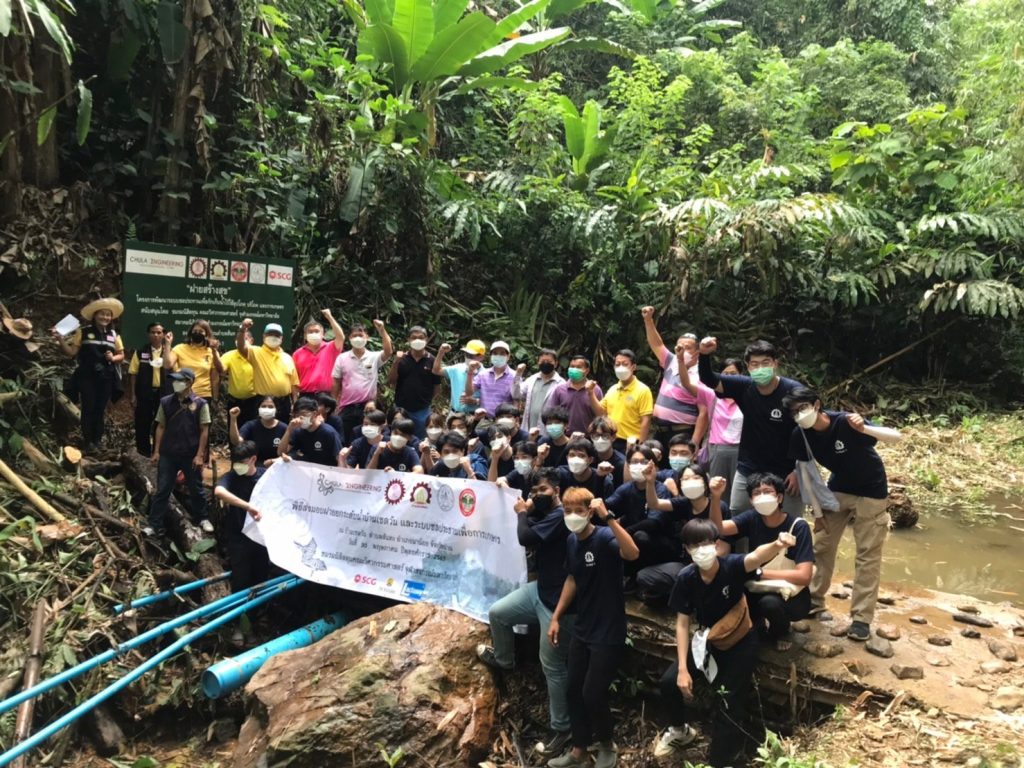
The volunteer camp initiative commenced in the year 2018 with surveys and the implementation of water resource development projects in collaboration with local communities and sub-district administrative organizations. This collaboration resulted in the creation of water resources and systems, including the Huai Nam Phia weir in 2019, which covered an area of approximately 200 rai with water. In 2021, the camp established the Ta Nam weir and distribution system for consumption. In 2022, the Huai Tang Ho weir was created, generating water for an expanded area of approximately 200 rai. These efforts ensured year-round water utilization for 43 households. Moreover, community members are able to cultivate high-value fruit trees such as durian, cocoa, and date palm, as well as various vegetables, resulting in annual household savings of 35,813 baht per rai.
These initiatives have significantly improved the quality of life for the residents, fostering trust and confidence in the Chetawan Village community. In 2023, in addition to solar-powered water pumping systems and a check dam, the community allocated land to Chulalongkorn University for the establishment of the ‘Dintania Pracha Ruam Jai’ center. This center serves as a hub for knowledge exchange with local community members and external visitors, including other organizations. It also serves as a model for sharing water resource development strategies with other communities in drought-prone highland areas.
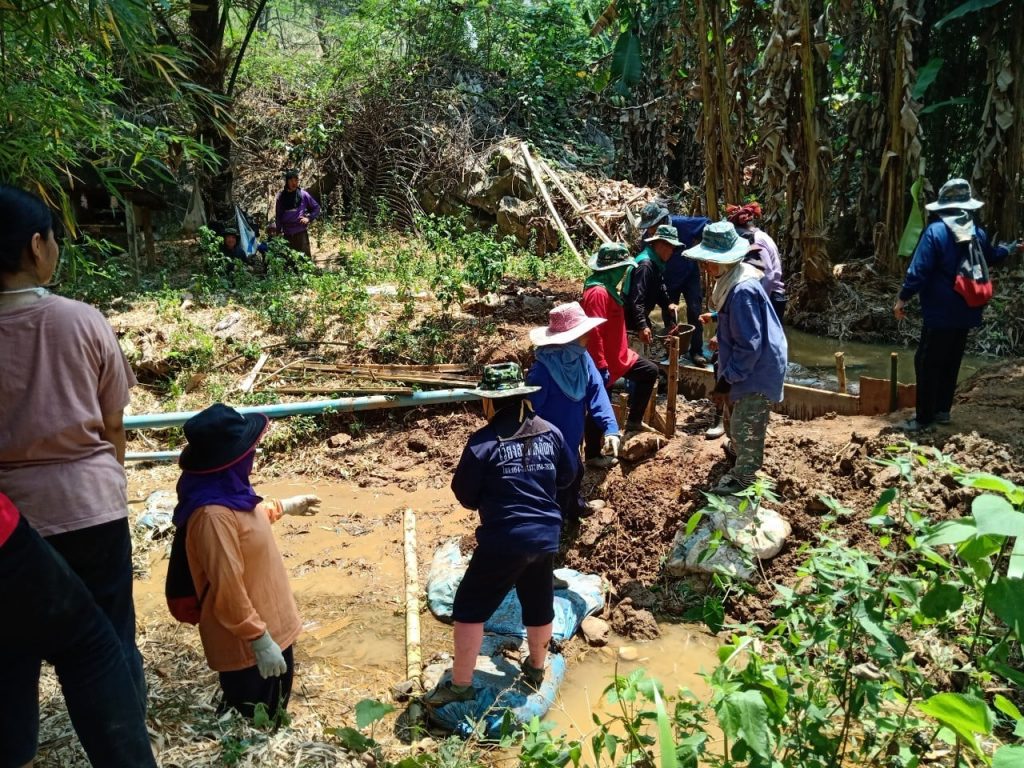
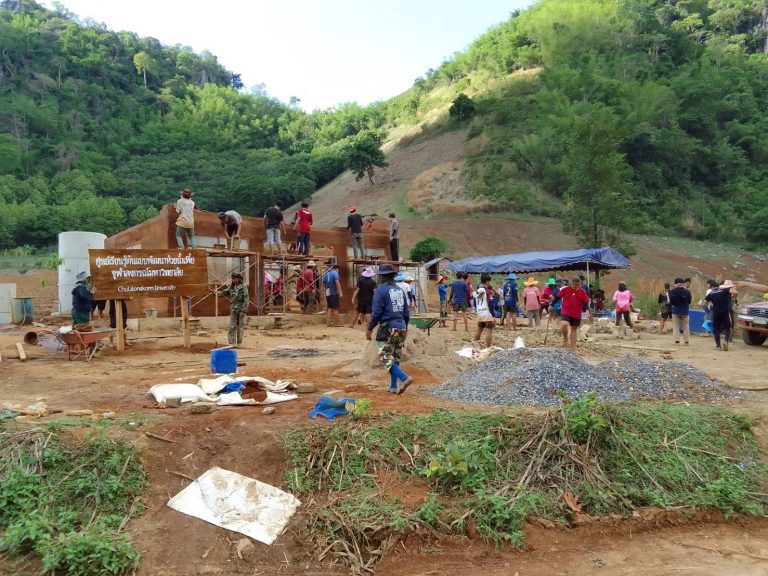
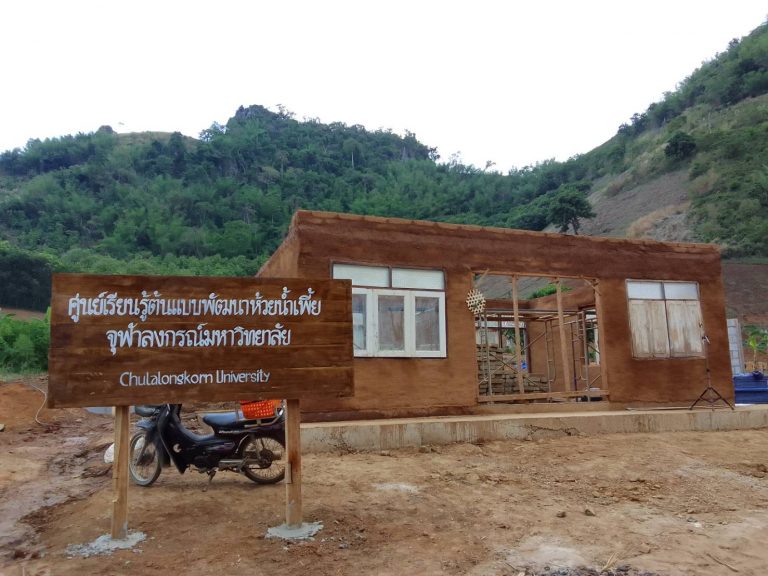
BY
Faculty of Engineering, Chulalongkorn University
Related SDGs
Others
Learning Curve Toward Service
Veterinary student volunteers gain hands-on appreciation of rural life

